Java cedar
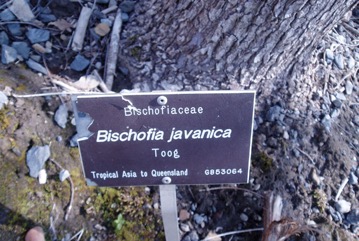
A tropical plant. It grows in the lowland and lower mountain zones. It grows from sea level to 900 m in Fiji. In Nepal it grows to about 1000 m altitude. It is often in disturbed forest or old garden land. They occur throughout the Philippines in dry open places. It can tolerate some shade and light frost but is best in full sun. It needs fertile, well drained soil. It suits hardiness zones 9-12. In XTBG Yunnan. In Sichuan.
Also known as:
Akagi, Aukkyu, Aukkywe, Batang bintang, Bhillar, Bishop wood, Boke, Cok, Gao, Ge ben jian, Gobranerale, Hka-shatawi, Ighogha, Kaen, Kaijal, Kain, Kainjal, Kainjalo, Kanji, Khuang-thli, Koka, Koka damu, Kywe-tho, Mafia, Nalupumushti, Nhoi, Nira, 'O'a, Paniala, Panisemla, Pankain, Phang put, Po-gaungsa, Pohon gintungan, Shengpo, Sintir, Si pu ge lie, Tag schein, Taiso, Takkir, Tayok-the, Thaijilit, Thaiso, Thirippu, Thondi, Tiger tree, Togotogo, Tongotongo, Toog, Tuai, Tuer, Tuwwo, Tuwwol, Uriana, Urium, Yae-pa-done, Yepaduk, Ye-padauk, Yepadon
Synonyms
- Bischofia trifoliata (Roxb.) Hook.f.
- Microelus roeperianus Wight and Arn.
- Andrachne trifoliata Roxb.
Edible Portion
- Leaves, Fruit, Seeds
Where does Java cedar grow?
Found in: American Samoa, Andamans, Asia, Australia, Bangladesh, Bhutan, Cambodia, China, East Timor, Fiji, Hawaii, Himalayas, India, Indochina, Indonesia, Japan, Laos, Malaysia, Myanmar, Nepal, New Caledonia, Niue, Northeastern India, Pacific, Papua New Guinea, PNG, Philippines, Samoa, SE Asia, Sikkim, Solomon Islands, Sri Lanka, Taiwan, Thailand, Timor-Leste, Tonga, United States, Vanuatu, Vietnam, Wallis and Futuna
Notes: There is only one (2) Bischofia species. It can become invasive.
Status: It is not known if it is used for food in Papua New Guinea. The fruit are often eaten by children.
Growing Java cedar
Cultivation: Plants can be grown by seed or cuttings. Seedlings are transplanted after 3-4 months.
Edible Uses: The ripe fruit are eaten raw and are sweet. They are also used for drinks. The leaves are cooked with pork. (This may be to tenderise the pork.) Young leaves are eaten in salads and used as a condiment. The seeds are eaten. The young buds are used for pickles.
Production: It grows very quickly. In NE India fruit are available June to July.
Nutrition Info
per 100g edible portion| Edible Part | Energy (kcal) | Protein (g) | Iron (mg) | Vitamin A (ug) | Vitamin c (mg) | Zinc (mg) | % Water |
|---|---|---|---|---|---|---|---|
| Leaves | 70 | 4.1 | - | - | 30 | - | 76.9 |
| Fruit | - | - | - | - | - | - | |
| Seeds | - | - | - | - | - | - |
Java cedar Photos

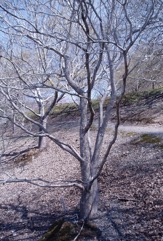
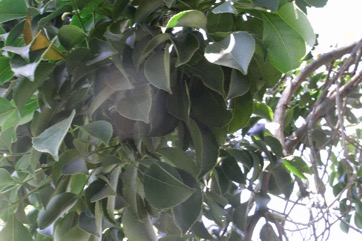
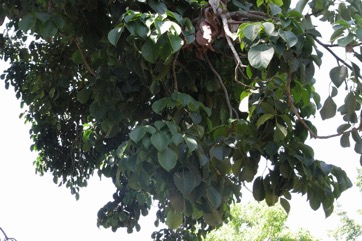
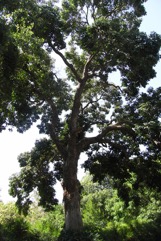
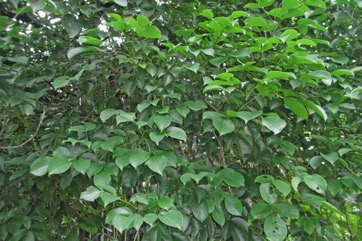
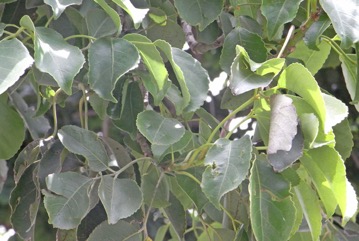
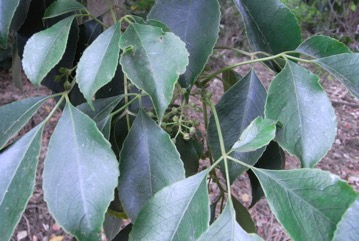
References
Ambasta S.P. (Ed.), 2000, The Useful Plants of India. CSIR India. p 74
Baishya, S. Kr., et al, 2013, Survey of Wild Edible Fruits of Dhubri District, Assam, India. Plant Archives Vol 13 (1): 155-158
Barwick, M., 2004, Tropical and Subtropical Trees. A Worldwide Encyclopedic Guide. Thames and Hudson p 51
Basu, P., and Mitra, B., 1991, A note of the less known plant Bischofia javanica Blume (Bischofiaceae) in Sikkim. J. Econ. Tax. Bot. Vol. 15 No. 3 pp 703-704
Bijdr. 17:1168. 1826-1827
Bircher, A. G. & Bircher, W. H., 2000, Encyclopedia of Fruit Trees and Edible Flowering Plants in Egypt and the Subtropics. AUC Press. p 59
Bohra, N., et al, 2017, Ethnobotany of wild edible plants traditionally used by the local people in the Ramnagar regions from Nainital District, Uttarakhand, India. Biolife 5(1): 12-19
Brahma, S., et al, 2013, Wild edible fruits of Kokrajhar district of Assam, North-East India, Asian Journal of Plant Science and Research 3(6):95-100
Cabalion, P. and Morat, P., 1983, Introduction le vegetation, la flore et aux noms vernaculaires de l'ile de Pentcoste (Vanuatu), In: Journal d'agriculture traditionnelle et de botanique appliquee JATBA Vol. 30, 3-4
Cao, Y., et al, 2020, Ethnobotanical study on wild edible plants used by three trans-boundary ethnic groups in Jiangcheng County, Pu’er, Southwest China. Journal of Ethnobiology and Ethnomedicine (2020) 16:66
Carig, Elizabeth T., 2020, Guidebook on Native Trees within the Quirino Forest Landscape. Plaridel, Bulacan, St. Andrew Publishing House. p 109
Clarke, W.C. & Thaman, R.R., 1993, Agroforestry in the Pacific Islands: Systems for sustainability. United Nations University Press. New York. p 225
Cooper, W. and Cooper, W., 2004, Fruits of the Australian Tropical Rainforest. Nokomis Editions, Victoria, Australia. p 174
Cundall, P., (ed.), 2004, Gardening Australia: flora: the gardener's bible. ABC Books. p 239
Delang, C. O., 2007, Ecological Succession of Usable Plants in an Eleven-Year Fallow Cycle in North Lao P.D.R., Ethnobotany Research and Applications. Vol. 5:331-350
Dobriyal, M. J. R. & Dobriyal, R., 2014, Non Wood Forest Produce an Option for Ethnic Food and Nutritional Security in India. Int. J. of Usuf. Mngt. 15(1):17-37
Etherington, K., & Imwold, D., (Eds), 2001, Botanica's Trees & Shrubs. The illustrated A-Z of over 8500 trees and shrubs. Random House, Australia. p 132
Facciola, S., 1998, Cornucopia 2: a Source Book of Edible Plants. Kampong Publications, p 50
Franklin, J., Keppel, G., & Whistler, W., 2008, The vegetation and flora of Lakeba, Nayau and Aiwa Islands, Central Lau Group, Fiji. Micronesica 40(1/2): 169–225, 2008
GTZ 1996, A Guide to some Indigenous Fijian Trees. GTZ Suva. p 107
Hani Medicine of Xishuangbanna, 1999, p 663
Hariyadi, B., 2008, The Entwined Tree: Traditional Natural Resource Management of Serampas, Jambi, Indonesia. Ph. D thesis. Univ. or Hawaii. p 401
Havel, J.J., 1975, Forest Botany, Volume 3 Part 2 Botanical taxonomy. Papua New Guinea Department of Forests, p 142
Hoare, A., 2003, Food use of the Lundayeh SW Sabah. Borneo Research Council.
Hu, Shiu-ying, 2005, Food Plants of China. The Chinese University Press. p 509
Jackes, B.R., 2001, Plants of the Tropics. Rainforest to Heath. An Identification Guide. James Cook University. p 52
Johns, R.J., 1976, Common Forest Trees of Papua New Guinea. Part 5 Angiospermae, Forestry College Bulolo, PNG p 222
Kar, A., & Borthakur, S. K., 2008, Wild edible fruits of Karbi's of Karbi Anglong district of Assam, India, Pleione 2(2): 175-181
Kar, A., et al, 2013, Wild Edible Plant Resources used by the Mizos of Mizoram, India. Kathmandu University Journal of Science, Engineering and Technology. Vol. 9, No. 1, July, 2013, 106-126
Krishen P., 2006, Trees of Delhi, A Field Guide. DK Books. p 197
Kuo, W. H. J., (Ed.) Taiwan's Ethnobotanical Database (1900-2000), http://tk.agron.ntu.edu.tw/ethnobot/DB1.htm
Liefting, A., et al, Samoan plant names. http://en.wikipedia.org
Manandhar, N.P., 2002, Plants and People of Nepal. Timber Press. Portland, Oregon. p 112
Marinelli, J. (Ed), 2004, Plant. DK. p 446
Monsalud, M.R., Tongacan, A.L., Lopez, F.R., & Lagrimas, M.Q., 1966, Edible Wild Plants in Philippine Forests. Philippine Journal of Science. p 469
Morley, B.D., & Toelken, H.R., (Eds), 1983, Flowering Plants in Australia. Rigby. p 134
Mot So Rau Dai an Duoc O Vietnam. Wild edible Vegetables. Ha Noi 1994, p 120 (As Bischofia trifoliata)
Mozhui, R., et al, 2011, Wild edible fruits used by the tribals of Dimapur district of Nagaland, India. Pleione 5(1): 56 - 64.
Mukhia, P.K., et al, 2013, Wild plants as Non Wood Forest Products used by the rural community of Dagana, a southern foothill district of Bhutan, SAARC Journal, 27 pages
Murtem, G. & Chaudhrey, P., 2016, An ethnobotanical note on wild edible plants of Upper Eastern Himalaya, India. Brazilian Journal of Biological Sciences, 2016, v. 3, no. 5, p. 63-81
Patiri, B. & Borah, A., 2007, Wild Edible Plants of Assam. Geethaki Publishers. p 126
Pegu, R., et al, 2013, Ethnobotanical study of Wild Edible Plants in Poba Reserved Forest, Assam, India. Research Journal of Agriculture and Forestry Sciences 1(3):1-10
Sahni, K.C., 2000, The Book of Indian Trees. Bombay Natural History Society. Oxford. p 148
Sarma, H., et al, 2010, Updated Estimates of Wild Edible and Threatened Plants of Assam: A Meta-analysis. International Journal of Botany 6(4): 414-423
Shin, T., et al, 2018, Traditional knowledge of wild edible plants with special emphasis on medicinal uses in Southern Shan State, Myanmar. Journal of Ethnobiology and Ethnomedicine (2018) 14:48
Smith, A.C., 1981, Flora Vitiensis Nova: A New flora of Fiji, Hawai Botanical Gardens, USA Vol 2 p 495
Staples, G.W. and Herbst, D.R., 2005, A tropical Garden Flora. Bishop Museum Press, Honolulu, Hawaii. p 295
Sukarya, D. G., (Ed.) 2013, 3,500 Plant Species of the Botanic Gardens of Indonesia. LIPI p 157
Suwardi, A. B., et al, 2020, Ethnobotany and conservation of indigenous edible fruit plants in South Aceh, Indonesia. Biodiversitas Vol. 21, No. 5, pp 1850-1860
Swaminathan, M.S., and Kochnar, S.L., 2007, An Atlas of major Flowering Trees in India. Macmillan. p 238
Tanaka,
Thaman, R.R., 1976, The Tongan Agricultural System, University of the South Pacific, Suva, Fiji. p 383
Thaman, R. and W. Clarke, Paper on Agroforestry on Aneityum and Tanna, Vanuatu from Internet
Upreti, K., et al, 2010, Diversity and Distribution of Wild Edible Fruit Plants of Uttarakhand. Bioversity Potentials of the Himalaya. p 162
Van Sam, H. et al, 2004, Trees of Laos and Vietnam: A Field Guide to 100 Economically or Ecologically Important Species. Blumea 29 (2004) 201-349
Van Sam, H. et al, 2008, Uses and Conservation of Plant Species in a National Park. A case study of Ben En, Vietnam. Economic Botany 62:574-593
Whistler, W.A., 2004, Rainforest Trees of Samoa. Isle Botanica Honolulu, Hawaii. p 60
www.nationalherbarium.nl/thaueuph/ Flora of Thailand.
www.worldagroforestrycentre.org/treedb/
Xu, You-Kai, et al, 2004, Wild Vegetable Resources and Market Survey in Xishuangbanna, Southwest China. Economic Botany. 58(4): 647-667.
Yuncker, T.G., 1959, Plants of Tonga, Bernice P. Bishop Museum, Hawaii, Bulletin 220. p 161